Activities: Women in Leadership and Animal Rights
Here at PETA, we acknowledge that all the negative “-isms”—from sexism to speciesism—share a common denominator of fear, ignorance, exploitation, oppression, and bigotry. We believe that people who want to create a more just world must work to end all prejudice, not just the kinds that directly affect our own species.
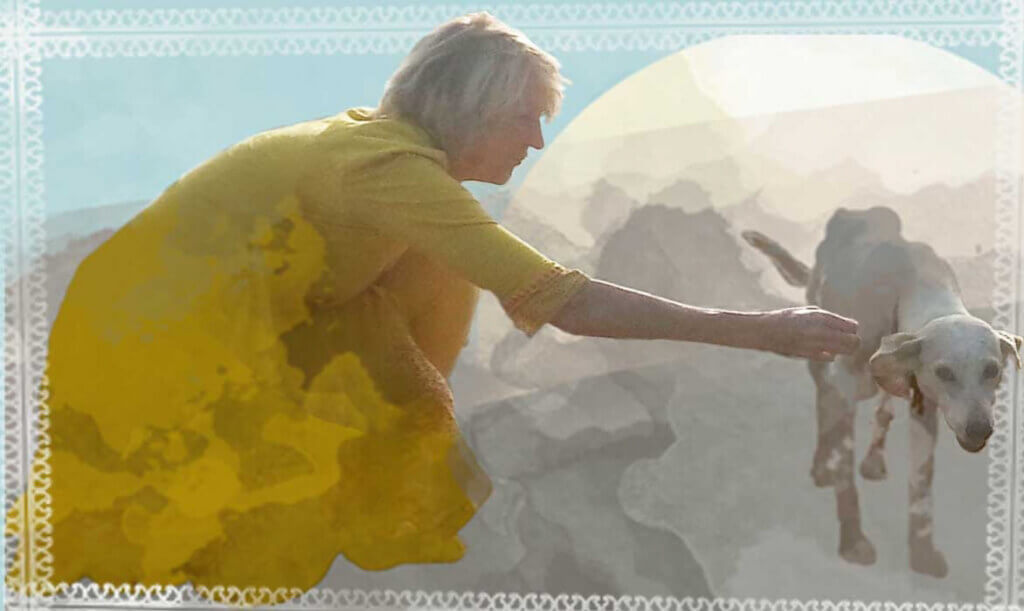
Women have always led PETA—from its founding in 1980 by our president, Ingrid Newkirk, to today, when women hold the majority of the U.S. executive positions. Tough, smart, and strategic female activists make up almost 75% of PETA’s workforce, and together, we’re changing the world for our sisters of all species—because it’s not just human females who have historically been subjugated, oppressed, and abused, as well as suffering the consequences of their reproductive systems being regulated and controlled. Female animals have endured many similar injustices, which continue to this day.

The following activities are designed to be used as part of any unit that focuses on feminism or intersectional social justice issues, and they’re great to use for Presidents Day, Women’s History Month, or any other occasion that you find suitable. They focus on Newkirk’s inspirational accomplishments as well as the intersection between social justice movements like women’s rights and animal rights.
Grades K–2
Newkirk is a great example of a strong woman who is championing a noble cause. Start by asking students to think of women they know who are doing important things to help others. Take answers aloud and write them on the board so that students can see that many women in their lives are standing up to help others.
Emphasize that this includes other species, too, and let them know that they’re going to be learning about a woman who has made a big difference for animals. Project the images on the image sheet for the class while reading the text from the “Meet Ingrid Newkirk” reading sheet aloud to your students. (If you’d like to project the text in addition to the photos or print copies of it so that students can follow along, you can use this sheet, which combines both.) Explain that PETA is an organization dedicated to helping animals and that it’s the largest animal rights organization in the world.

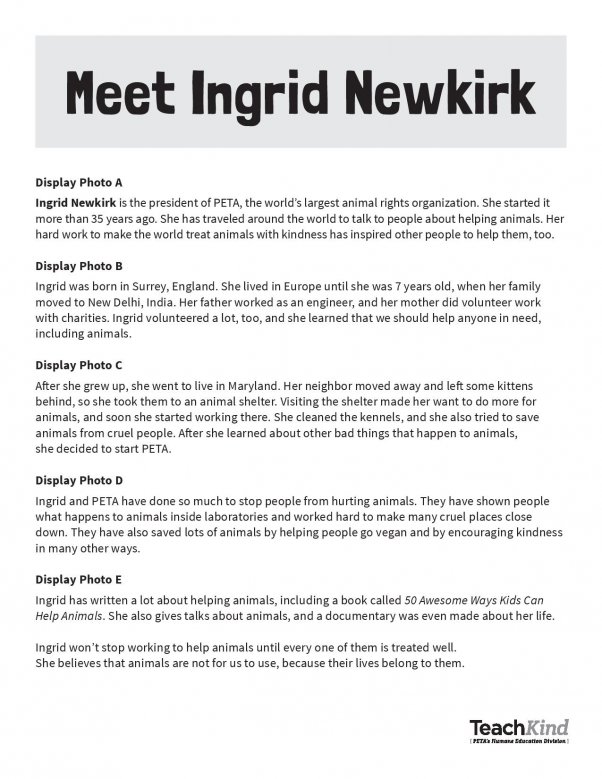
After reading, ask students what they think are things that must be important to Newkirk. Encourage them to use the text as evidence to support their ideas. Then have students respond to the following prompt using the informational writing graphic organizer and describe how Newkirk helps animals. They should choose three key facts from the text to support their claims.
If your students are in kindergarten, use this version. If your students are in first or second grade, use this one.
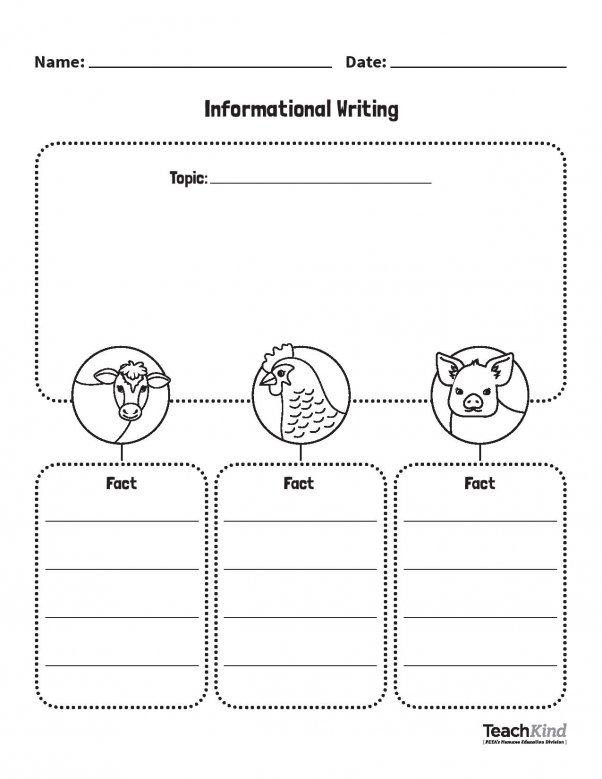
Once students have filled out their sheet, ask them to turn the page over and, on the back, draw an illustration depicting one of the facts from the text concerning how Newkirk helps animals.
Grades 3–5
For more than 35 years, since launching the largest animal rights group in the world, Newkirk has led PETA and not only helped to stop animal abuse in many different industries but also inspired countless young women to stand up and work to help female animals who are suffering at the hands of industries that exploit them.
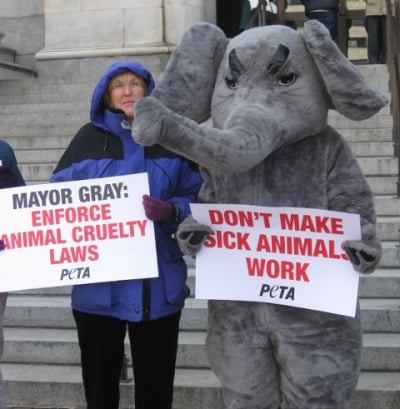
Start by asking students to think of women they know who are doing important things to help other living, feeling beings—humans or other animals. Have students raise their hands and share their thoughts with the class.
Then, show them the short video titled “PETA’s Ingrid Newkirk Is All About Girl Power!,” in which Newkirk talks about her journey as a woman speaking out against injustices and the ways that animal rights and women’s rights have often intersected.
After students have watched the video, hand out printed copies of the “Meet Ingrid Newkirk” reading sheet and accompanying glossary to each student.
After students have read “Meet Ingrid Newkirk,” go over each of the terms in the glossary together. Read the sentence in which each word appears in the reading sheet and then have students make up a sentence that uses the word and raise their hands to share.
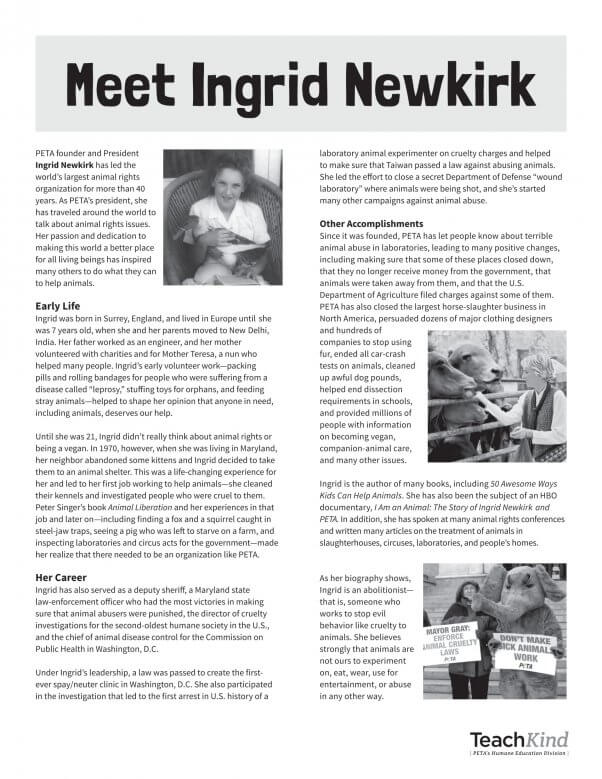
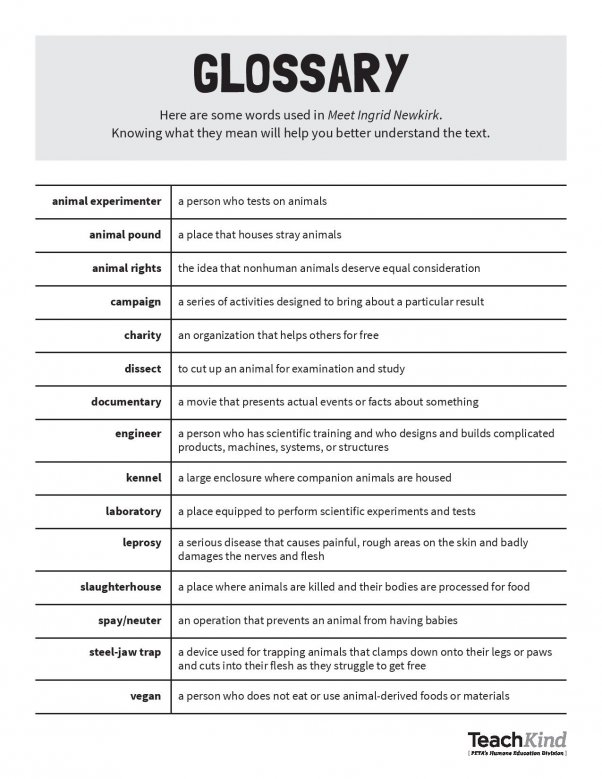
Once the students have gone over the words in the glossary, give them copies of the main idea graphic organizer and have them fill it out based on what they feel the main idea of the text is (e.g., that Newkirk is someone who speaks up for what’s right or someone who helps animals).
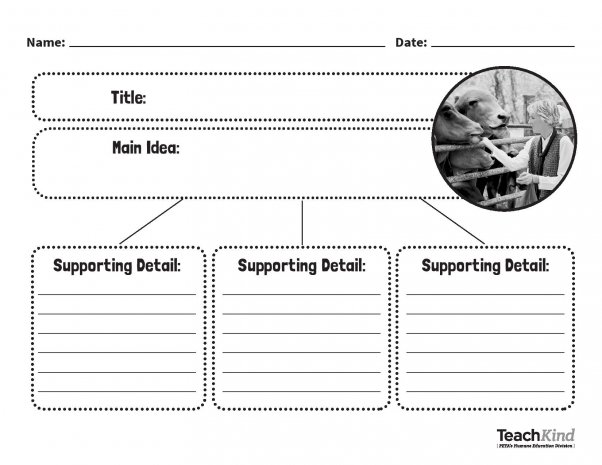
Discuss as a class the main ideas of the text that students wrote on their worksheets and compare supporting textual details.
Grades 6–12
For more than 35 years, since launching the largest animal rights group in the world, Newkirk has led PETA and not only helped to stop animal abuse in many different industries but also inspired countless young women to stand up and work to help female animals who are suffering at the hands of industries that exploit them.
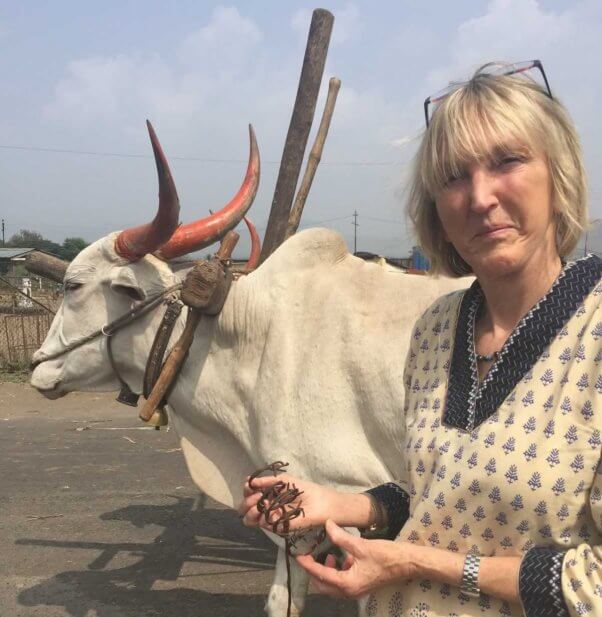
Start the lesson by showing students the short video titled “Feminism and Animal Rights,” in which Newkirk discusses the intersection of women’s rights, animal rights, and the goal of equality for all.
After viewing the video, talk to students about the way that women throughout history have been (and still are) subjugated, oppressed, and abused—and that female animals of other species today endure many of the same injustices. For example, female cows in the dairy industry are exploited for milk—although they produce it for their own babies, just as all mammals do. Hens in the egg industry are treated like egg-laying machines and are forced to spend their lives crowded into tiny wire “battery” cages, unable to extend a single wing. And the meat, dairy, and egg industries aren’t just harmful to animals—they also have a negative impact on women and other marginalized groups.
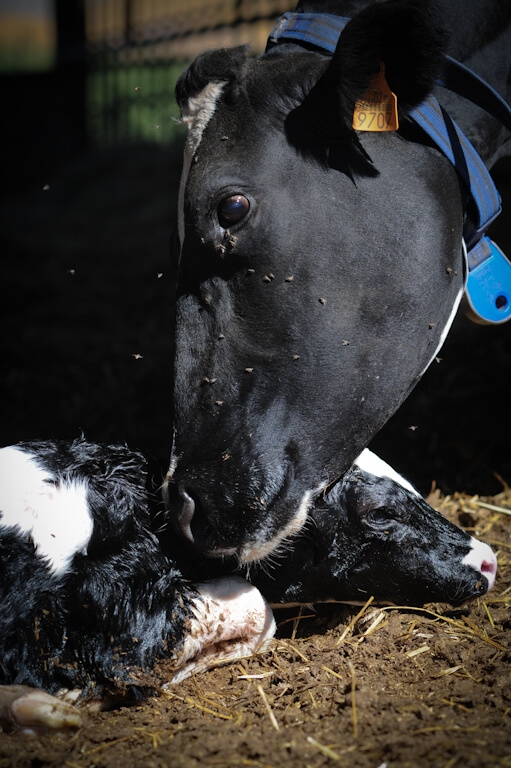
Hand out copies of the “How the Consumption of Milk, Meat, and Eggs Affects Female Animals” reading sheet to your students and have them read both pages, which treat the topics mentioned above in depth.
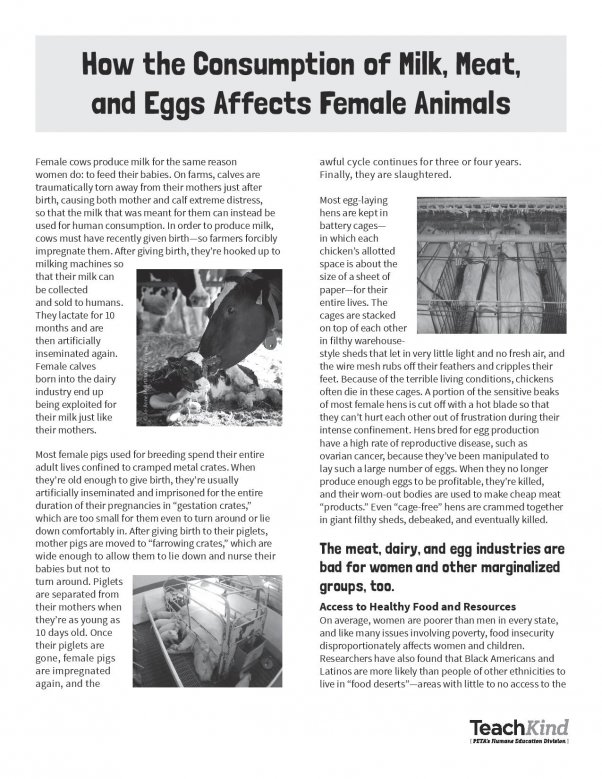
After students read the text, have them respond to the following comprehension questions citing details from the text whenever possible to support their opinions:
- In what ways are female animals’ reproductive systems used in the meat, dairy, and egg industries? Cite details from the text.
- Do you think that this treatment of animals is justified? Why or why not?
- In what ways are humans (specifically, marginalized groups such as women, people of color, and immigrants) affected by the meat, dairy, and egg industries?
- Using details from the text, explain the factors that contribute to working conditions in slaughterhouses.
- Why do you think working conditions in slaughterhouses are so poor?
- Do you think that one day animals will be given more rights and that people will look back and be surprised by the treatment that they once endured on farms?
- What are some things that people can do to speak up for animals in these industries?
- In what ways are animal rights and human rights related?
Discuss responses as a class, and use the concept of compassion for all beings—both human and otherwise—to guide the conversation.
*****
As an educator, you have the opportunity to celebrate the accomplishments of women in your classroom and raise awareness of inequality and the importance of speaking up. As you explore this issue with your students, you can mention other social justice causes, such as animal rights, to help foster the realization that all beings are interconnected and compassion is essential. Working together, teachers and students can help end oppression of all kinds.
Looking for other ways to teach about the intersection of animal rights and other important social-justice movements? Check this out:





